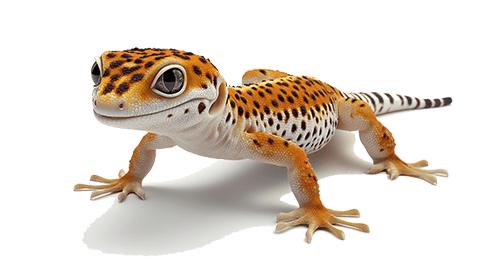20 Captivating Facts About Bearded Dragons
Bearded dragons are one of the most popular reptiles in the pet world, and it’s not hard to see why. From their curious personalities to their fascinating physical traits, these little lizards are full of surprises. Whether you’re already a proud beardie owner or just considering adding one to your family, here are 20 facts about bearded dragons that will captivate your imagination and deepen your appreciation for these remarkable creatures.
They’re Native to Australia
Bearded dragons, specifically the Pogona vitticeps, hail from the arid regions of Australia. They are commonly found basking on rocks or trees in the wild, soaking up the intense Aussie sun.
Their ‘Beard’ Is for More Than Looks
That spiky ‘beard’ around their throat isn’t just for show. When threatened or trying to assert dominance, they can puff up their throat and darken the beard, making them look much more intimidating than they actually are.

They Love to Wave
One of the most endearing behaviors of bearded dragons is their “waving.” They lift one of their front legs and gently wave it in a circular motion. This is often seen as a sign of submission or a friendly gesture to other dragons.

They Change Colors Based on Mood
Beardies can slightly change the color of their skin depending on their mood or temperature. When they’re stressed, cold, or trying to attract mates, you may notice them darkening.

Omnivores with a Diverse Palate
Bearded dragons eat a mix of plants and animals. Their diet includes everything from insects (like crickets and roaches) to leafy greens and fruits. A well-balanced diet is key to keeping them healthy. (Amazon affiliate link)

They Can Live Over a Decade
With proper care, bearded dragons can live anywhere from 10 to 15 years. That means taking in a beardie is a long-term commitment, but the rewards are well worth it.
Third Eye on Their Head
Bearded dragons have a “third eye,” known as the parietal eye, on top of their heads. It doesn’t see in the way their other eyes do, but it helps them detect shadows and movement, potentially alerting them to predators.
They Can Run on Two Legs
When running at full speed, bearded dragons sometimes lift their bodies and sprint on their hind legs like mini dinosaurs. This ability allows them to escape predators quickly, although pet dragons rarely need this skill.
They Love Bath Time
Many bearded dragons enjoy a good soak. Baths help them stay hydrated, clean, and aid in shedding. It’s a relaxing treat that can also prevent impaction, a common issue when they ingest too much substrate.

They Have Teeth – Tiny but Mighty
Though they don’t look particularly menacing, bearded dragons have small, sharp teeth that allow them to crush insects and plants. Their bites aren’t generally harmful, but it’s a reminder to handle them with care.
Beardies Can Be Social
Unlike some reptiles, bearded dragons have fairly social personalities. They recognize their owners and often enjoy being handled, especially when they’ve grown accustomed to human interaction.
They Have a Complex Social Hierarchy
In the wild, bearded dragons have a defined social structure. Dominant dragons will display their beards and head-bobbing, while submissive ones will wave or crouch. This behavior can sometimes be seen in captivity as well.

They’re Semi-Arboreal
Although they spend much of their time on the ground, bearded dragons are also good climbers. In their natural habitat, they often perch on branches or rocks to bask in the sun or keep a lookout. (Amazon affiliate link)

UVB Light is Essential
Bearded dragons need UVB light to synthesize vitamin D3, which is crucial for calcium absorption. Without it, they can develop metabolic bone disease—a serious health condition. So make sure their terrarium is equipped with proper lighting. (Amazon affiliate link)
Tail Autotomy Is a Myth
Unlike some lizards, bearded dragons cannot regrow their tails if they lose them. Once it’s gone, it’s gone for good. So, it’s important to handle them gently and avoid any accidents that could lead to injury.
Beardies Brumate, Not Hibernate
In the cooler months, bearded dragons enter a period called brumation. It’s similar to hibernation in mammals, where they become less active, eat less, and sleep for extended periods. It’s perfectly normal and nothing to worry about. (Amazon affiliate link)
They Communicate Through Head Bobbing
Bearded dragons are quite the body language experts. They use head bobbing as a form of communication, whether it’s asserting dominance, showing submission, or courting potential mates.

They’re Diurnal
Unlike nocturnal reptiles, bearded dragons are diurnal, meaning they’re active during the day and sleep at night. This makes them a great pet for owners who want to enjoy their dragon’s activity and interaction during daytime hours.
Their Shed is Never a Single Piece
Bearded dragons shed their skin in patches rather than all at once. Young beardies shed more frequently because they’re growing rapidly, while adults typically shed a few times a year.
They Have Distinct Personalities
Every bearded dragon has its own unique personality. Some are laid-back and love basking all day, while others are curious and energetic, constantly exploring their environment. This individualism makes them truly special as pets.
Conclusion
Bearded dragons are much more than just cold-blooded reptiles—they’re fascinating, curious, and full of character. From their quirky behaviors to their physical adaptations, these lizards are the perfect companion for those looking for a unique pet with personality. If you’re lucky enough to own one, you know just how charming and endearing these little dragons can be!
Affiliate Disclosure
This post may contain affiliate links, which means I earn from purchases made through links. Please see the privacy policy page for more details.






